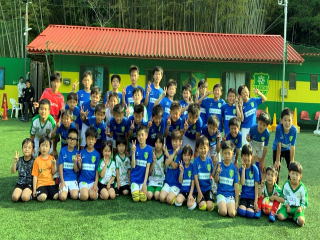
Interestingly, Motobu Choki was defeated over and over again by his older brother, Motobu Choyu, who had been trained in Motobu Udundi. In fact, it should be noted that the principle of the floating foot is found in various martial arts, including Motobu Udundi, an Okinawan martial art practiced by the Motobu family, but transmitted only to the first-born males (which is why Motobu Choki did not study it). Although the opinion of Motobu Choki sensei (teacher present, among other things, in the lineage of our school) is useful, even in this case it should be taken more as a personal opinion, and not as a certain reality. Honestly I would not take such a source literally, but since it reflects what we know about Motobu Choki's Karate, its general sense could correspond to the thought of the famous master. According to Nakata, the aforementioned sentence (and others present in the book) should be attributed to Motobu Choki sensei. Nakata was a student of Konishi Yasuhiro, and also attended the Motobu Choki dojo as a guest. This sentence was written by Nakata Mizuhiko, a Japanese (non-Okinawan) karateka, and published in 1978 in the book Motobu Choki Sensei Goroku (Talking about Motobu Choki Sensei).

In fact, Motobu Choki never wrote anything like this. Weight is not applied to either the front or the back foot, instead the weight is put more evenly on both feet." During defence or offence the knees are tightened and the hip is dropped.

This stance with the knees being gently bent can move freely. In My Karate the same stance work used in both kata and kumite, and is like the stance of Naifanchi.
#Konishi tai sabaki free#
Zenkutsu and Kokutsu, are also inferior stances, hindering the free movement work of the legs. This because if your body get hit then immediately you’re blown away as you lost your balance. The so-called cat stance are one example of the floating feet, which is most disliked inside martial arts. " In my Karate, there are no stances such as the Nekoashi (cat stance), Zenkutsu, or Kokutsu, etc. However, the sentence that contributed most to making us understand Motobu Choki's opinion is the following: For example, he did not agree with the fact that the hips were "pushed back" during the attack (in the ukiashi-dachi the hips are set back from the front foot.), preferring more natural positions, such as kihon-dachi/shizentai-dachi. We know from several sources, including his son, that Motobu Choki did not appreciate ukiashi-dachi. Not to mention, among other things, that Kenjutsu and Karate have some points in common, but they are two completely different martial arts, starting with the fact that in Kenjutsu you are armed, in Karate you are not.Ĭhoshin Chibana sensei in a " floating" Kosa-dachiĬoming to the world of Karate, one cannot fail to mention the famous Motobu Choki. We can therefore say that in reality, Musashi, like anyone, advised against using a principle different from that of his own style. This principle is the basis of the foot movement of the Musashi school of fencing, the Niten Ichi Ryu.

But if we read the Book of the Five Rings, we discover that Musashi did not advise against floating positions, but rather advised against ADVANCING by jumping, adopting a floating position, or keeping the hips lowered (when attacking or defending with the sword), this because they were three methods of advancement unrelated to the principle of "feet Yin and Yang", or the principle of advancing with both feet alternating, and never with only one foot. Normally the equation is taken for granted: floating positions = position to be avoided, simply by virtue of the fact that it was said by someone famous. The question was dealt with in the famous Book of the Five Rings, and it is often not questioned why Musashi advised against these positions. This term was mentioned by the famous swordsman Miyamoto Musashi (1584–1645) according to whom, it is said, these positions are to be avoided. In Japanese, these positions are referred to as ukiashi-dachi.
#Konishi tai sabaki full#
Usually, in these positions, the body weight is not equally distributed between the lower limbs but, on the contrary, tends to be more concentrated on the leg corresponding to the foot that has full contact with the ground. It is often said that this foot is not anchored to the ground but, as we will see later, this is not the case. With the term floating positions, in martial arts, we mean the set of positions in which one of the two feet does not rest completely on the ground.


 0 kommentar(er)
0 kommentar(er)
